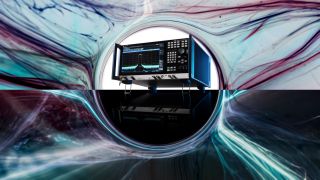Signal and spectrum analyzer technology | Harmonic distortion measurements
Harmonic distortion measurements using a spectrum analyzer
Author: Paul Denisowski, Test & measurement expert
Harmonics are copies of signals that appear at integer multiples of a fundamental frequency. These are usually created by non-linear devices, such as amplifiers. For example, when a signal at 100 MHz passes through a non-linear device, the output contains not only the original signal but also the harmonics of that signal at 200 MHz, 300 MHz, 400 MHz, 500 MHz, etc. Although the fundamental is not often called the “first harmonic,” harmonics are normally referenced by their “order,” so second harmonic, third harmonic, etc. Harmonics are sometimes useful, but they are usually undesirable. As such, it is important to measure the amplitudes of both individual harmonics as well as the sum of all harmonics: these types of measurements are called harmonic distortion measurements.














